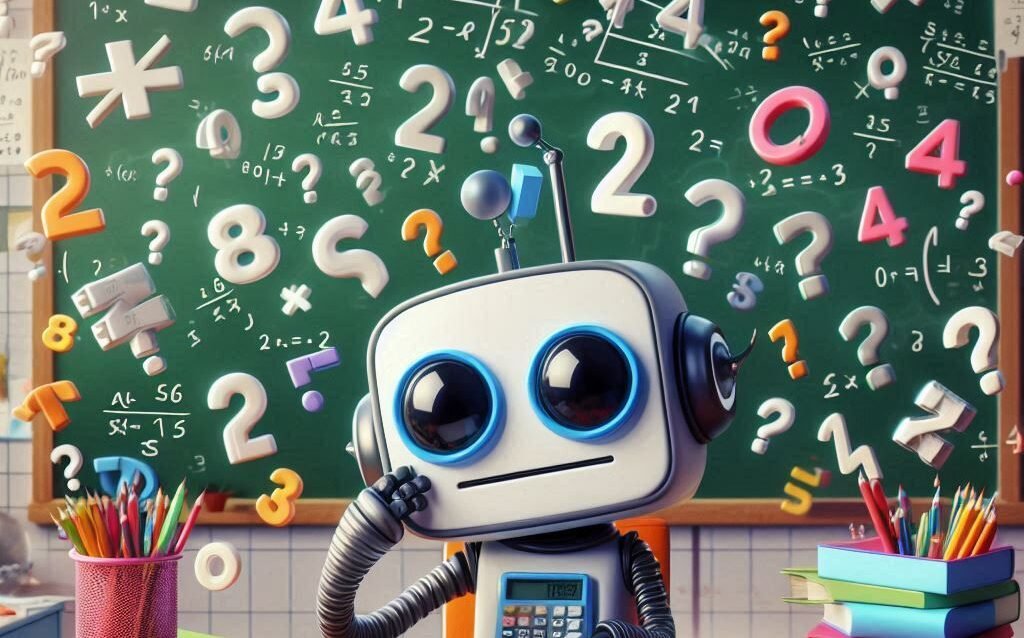Understanding the Limitations of AI in Mathematical Reasoning
The architecture of ChatGPT, as a product of natural language processing (NLP) technology, has fundamentally different capabilities compared to traditional mathematical reasoning systems. At its core, ChatGPT operates using an extensive dataset of text, which it analyzes to learn patterns and generate coherent human-like responses. This design is optimized for language comprehension and generation rather than computational accuracy or logical deduction, which can explain its deficiencies in mathematical tasks.
Natural language processing allows ChatGPT to understand context, syntax, and semantics, enabling it to create nuanced conversations. However, mathematical reasoning relies heavily on precise rules and structured logic. The difference lies in how these two disciplines approach problem-solving. While NLP excels in understanding the connotations and variations in human language, it struggles with the deterministic and exact nature of mathematics.
Moreover, the training methods employed for ChatGPT involve predicting the next word in a sequence based on context rather than calculating numerical outcomes through a defined set of mathematical operations. This reliance on probabilistic outcomes means that ChatGPT may produce answers that sound reasonable but are not accurately computed. Mathematical operations often require a level of rigor and consistency in logic that exceeds the capabilities of a language model.
This disconnect impacts ChatGPT’s ability to manage complex calculations or logical deductions that involve multiple steps or intricate relationships between numbers. Users might find that while ChatGPT can generate impressive text on mathematical concepts, the actual execution of mathematical reasoning remains outside its core abilities. As such, the limitations of ChatGPT underscore the broader challenges facing AI systems when they encounter tasks beyond their intended design and training, particularly in the realm of mathematics.
The Role of Training Data in ChatGPT’s Math Performance
The performance of ChatGPT in mathematical tasks is significantly influenced by the training data utilized in its development. ChatGPT is primarily trained on vast amounts of text data from the internet, which encompasses a broad range of topics. However, the representation of mathematical concepts within this dataset is relatively sparse when compared to more prevalent textual content, such as literature, articles, and conversational scripts. This disparity in representation poses a challenge for the model when it comes to processing and understanding mathematical principles.
The primary dataset was not designed specifically for mathematical rigor, resulting in ChatGPT developing a limited understanding of complex mathematical rules or operations. This limitation manifests in several ways, such as difficulties in performing arithmetic calculations, solving equations, or interpreting mathematical statements accurately. The model’s training is based on pattern recognition within the text rather than a structured understanding of mathematical logic. Consequently, it may generate responses that seem plausible linguistically but are mathematically incorrect.
Moreover, biases present in the training data can further impair the model’s mathematical aptitude. For instance, if the training set contains more qualitative discussions about mathematics or prevalent misconceptions, ChatGPT is likely to mimic those patterns in its outputs. This leads to a potential for misunderstanding fundamental concepts, thereby generating erroneous conclusions or misinterpretations of mathematical tasks. In essence, the performance deficiencies observed in ChatGPT’s mathematical reasoning can be traced back to the limited diversity and quality of mathematical examples available in the training data, underscoring the critical role that training data plays in shaping the capabilities of AI models like ChatGPT.
Common Mathematical Errors Made by ChatGPT
ChatGPT, while a sophisticated AI language model, exhibits specific limitations when it comes to performing mathematical tasks. One prevalent error is miscalculations. The AI often struggles with basic arithmetic operations and may produce incorrect results due to faulty procedural understanding. For instance, when asked to compute the sum of 47 and 85, it might erroneously respond with 120 instead of the correct answer, 132. Such miscalculations reveal a critical flaw in the model’s ability to reliably carry out numerical operations.
Another common issue arises from misunderstandings of mathematical terminology. ChatGPT’s comprehension of context and nuances in language may lead to erroneous interpretations of mathematical queries. For example, when prompted to evaluate a function at a specific point, the AI may misinterpret the request and provide a vague response or an unrelated answer instead. This lack of understanding of mathematical terms and their implications poses significant challenges, particularly in more complex inquiries.
Correct problem interpretation is essential for solving mathematical tasks accurately, and ChatGPT often falters in this area as well. When confronted with word problems, for instance, the AI may overlook critical details or misinterpret relationships between numbers and variables. A problem stating, “If a train leaves the station every 30 minutes, how many trains leave in three hours?” could result in several incorrect calculations if ChatGPT fails to properly parse the timing and frequency components.
These examples illustrate the systematic nature of ChatGPT’s mathematical errors, highlighting the model’s propensity for miscalculations, misunderstandings, and improper interpretations. Such limitations can lead to significant discrepancies in responses and underscore the need for caution when relying on AI for mathematical accuracy.
Future Directions for Improving AI in Math
The challenges faced by AI, particularly systems like ChatGPT, in executing mathematical computations highlight an essential area of growth and development. Future enhancements can focus on several strategic avenues to improve AI’s mathematical prowess. One promising direction is the integration of more structured reasoning approaches. Structured reasoning encourages the AI to process mathematical concepts in a manner similar to human thought processes, thereby bridging the gap between natural language understanding and numerical computation.
Another crucial avenue involves refining training datasets specifically designated for mathematics. Increased exposure to high-quality mathematical content during training can enhance an AI’s ability to understand and solve problems more accurately. The integration of more complex mathematical scenarios and a diverse range of problem types will equip AI systems with the tools necessary to navigate intricate mathematical challenges. Furthermore, adapting datasets to include not just solutions but also the methods and reasoning applied will promote deeper learning.
Additionally, the exploration of hybrid models offers a promising solution for enhancing mathematical computations in AI. By combining traditional numerical computation methods with advanced language processing techniques, these models can potentially capture the nuances of mathematical language more effectively. This synergy could lead to significant breakthroughs, allowing users to obtain more accurate and reliable mathematical solutions from AI systems.
The implications of these enhancements extend beyond improving mathematical capabilities. As AI systems become more adept at solving mathematical problems, users—including students, educators, and professionals—can rely on them with greater confidence for academic tasks, data analysis, and various applications in industry. Leveraging these advancements will not only improve user experience but also propel the utilization of AI as a valuable tool in the educational and professional arenas.




